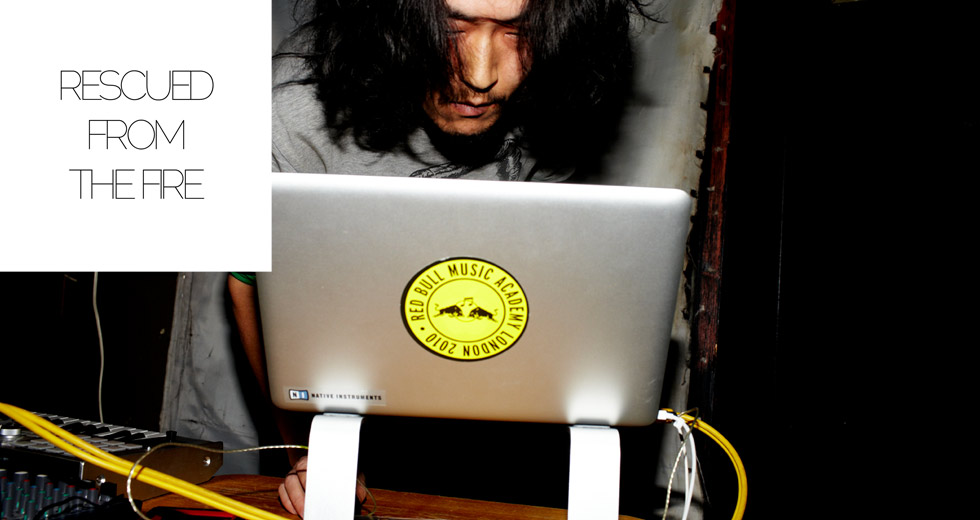Mau’lin: Style Wars
Mau’lin’s tale is exactly the type of story you like to hear – a producer working for years without releasing anything, honing his craft until he felt confident enough to unleash some breathtaking salvos on the world. In 2010, the producer known as Gareth Sprey was a Red Bull Music Academy participant, and things have moved quickly ever since. He’s put out two well-received singles and this year will have a hand in his first label, Tender Hooks. Angus Finlayson caught up with the London resident late last month to find out more.

Mau’lin first pricked ears with his single for Alexander Nut’s Ho_Tep label in 2011. “Deeper Than the Sun” was something of a curio, if not for the sheer number of styles on display – hints of UK funky’s percussive inflection and garage’s lithe flex, the muscly syncopation of broken beat and dubstep’s sub weight – then for the sheer density of the thing. Each bar of “Deeper Than the Sun” brimmed with ideas, while a distinctive, hyper-detailed approach to rhythm bound it all together.
The single was a bold statement of intent, one furthered by last year’s Function Open, a digital EP for the Japanese Diskotopia label. While these remain his only two releases to date, Gareth Sprey has already marked himself as one of the more interesting names to emerge from the UK’s current pile of post-everything producers.
Sprey explains via email that his route into dance music was a fairly standard one. Growing up in “quiet suburbia,” of England he caught the dance music bug listening to early ’90s pop dance compilations. His teenage years saw a detour into more extreme sounds – “metal, hardcore, punk, scary soundtracks and hip hop” – but before long Sprey was experimenting with music software and reappraising dance music. “I remember being like, ‘If I get a computer and a keyboard, I can make music like Fatboy Slim!’” he recalls. “I was wrong. It’s been a long and arduous learning curve. I've been producing for a while now, seven years or so.”
Sprey took a degree in music technology in Leicester between 2005 and 2008, which deepened his perspective on electronic music history. “It was a turning point for me, definitely,” he says. “We learnt about all the main players from the ’50s onwards, the beginnings of synthesis and non-musical composition. It made me realise a lot of dance music was an extension of these early ideas: minimalism, use of loops and found sounds.” He dabbled in more experimental forms of music-making, resulting in an installation of his – a piece “all about messing with localised sounds in public spaces” – being presented by the UK Arts Council at an international biennale in Macedonia. “It was fun, but afterwards I felt the whole thing lacked any immediate purpose. For me, dance music has that.”
As with many UK producers of his generation, Sprey’s music is a smart, tightly coiled hybrid that draws on a number of interrelated styles without settling into any single one. His sets, too, often cross a large amount of terrain; a mix for the Sonic Router blog last year featured both young post-punk eccentric Powell and classic Detroit house from Walt J. While many have criticised the polyglot sprawl of the current scene, Sprey is upbeat. “Personally, I'm all for eclecticism. It reflects the way we buy music now, and how we listen to it. The constant hybridisation present in a lot of new UK records could be seen to be lacking in focus, but for me this is all positive. It's all just development for an inevitable change, for the next chapter.” Regarding his own music, Sprey doesn’t perceive a lack of cohesion. “I'm aware there's lots of different styles present across my tracks, but I'd like to think there's a common thread [running through them], whether it's an ambient thing or some darker broken stuff.”
Sprey’s taste for full-bodied basslines, rambunctious swung rhythms and bold, drop-oriented structures definitely points to a deep love affair with UK underground music, which he does not deny. While in Leicester, he absorbed dubstep via a club night called Kontakt. “[It] was run by a legend called Felis,” he recalls. “He managed to get all the key figures up to play. I definitely adopted a different way of thinking [after that] when it came to bass and sub frequencies.” But it was the emergence of UK funky towards the end of that decade that led Sprey to lower his tempos a notch. “UK Funky was a gateway to UK house. I loved the cross-pollination that was happening there, especially the darker stuff that people like Marcus Nasty were playing,” he says. “Besides that, I'd been listening to a lot of early Detroit material like Cybotron, Model 500 – anything by Juan Atkins, actually. I loved the roughness. There was this kind of nostalgia happening too. It reminded me of being a kid and watching ’80s sci-fi films.”

Sci-fi is a recurrent theme in Sprey’s output, from the artwork of his releases to the icy, synthetic atmospheres that increasingly permeate his music. It will also play a central part in the Tender Hooks label that he recently launched with three friends. “Tender Hooks is our long-lost brand from the future,” he says. “Music-wise, we're looking to explore our collective tastes in house and techno and see where that takes us.” The name also refers to a bimonthly night at South London’s Corsica Studios, whose launch event saw the Clone and Don’t Be Afraid imprints descend on the venue en masse.
As for his own music, Sprey looks set to be more active this year. A second Diskotopia EP is in progress; a demo Sprey sends through suggests it will be among his darkest work to date. An EP on Tender Hooks, meanwhile, promises to explore a straighter house template. But while the Mau’lin project may rove between styles, Sprey’s distinctive way with rhythm – those dense lattice-works of percussion – remains a constant. “I see rhythm like a kind of science,” he says. “There's so many formulas that you can explore and experiment with. Getting lost making beats is one of a producer’s greatest escapes.”

